2-Stroke Vs 4-Stroke Dirt Bike | What’s the Difference?

So, you’re probably thinking of moving up to a 4-stroke dirt bike. But hang on a second… Have you checked out the 2-stroke models that are hitting the market right now?
There’s no denying that the 4-stroke engine is the standard at the moment. But let’s not ignore the fact that modern 2-stroke dirt bikes are delivering exceptional horsepower as well.
Consider the Yamaha YZ250 and YZ250F, for example. The latter delivers 39HP, while the other delivers 49HP. From there, can you easily say which one is superior?
Table of Contents
What Is a 2-Stroke Engine?
A 2-stroke dirt bike engine is a type of internal Otto combustion cycle: intake and exhaust. The fuel and air are drawn into the cylinder by an upward motion of the piston, compressed by a downward motion, mixed with fuel, and ignited by a spark plug or glow plug.
The resulting expansion causes the exhaust gases to push the piston in the opposite direction.
What Is a 4-Stroke Engine?
When you ride a 4-stroke dirt bike, you can feel the power of the combustion engine in action that requires four piston strokes to complete a single cycle (intake, compression, power, and exhaust). The dirt bike's 4-stroke engine, which ignites during the intake stroke, creates an explosion that sends power through the machine.
This combustion cycle repeats three times in four strokes to help create an even more intense explosion during each successive power stroke.
Let’s dig deeper to clearly see the differences between the two, and review the best models from both sides. Then, you can decide the better option between 2 stroke vs 4 stroke dirt bike.
2-Stroke Vs. 4-Stroke Dirt Bike
The main difference between the 2-Stroke Vs. 4-Stroke Dirt Bike lies in the weight and power. The 2-stroke dirt bike models are usually lighter than the 4-stroke dirt bike. Also, a 2-stroke engine has a superior power-to-weight ratio compared to a dirt bike with a 4-stroke engine. The 2-stroke bikes rev a lot faster than the 4-stroke bike engines and have reduced mass, torque, and inertia.
Top Pick
Yamaha YZ250 is our top pick for the 2-stroke dirt bike. With this model, you get exhilarating 2-stroke power. It comes with a race-inspired and aggressive styling, from new bodywork to incredible embedded graphics. This bike takes 2-stroke performance to a whole new level. You might think twice before moving to a 4-stroke after test-riding this bike.
Top Pick
KTM 450 SX-F is our top pick for the 4-stroke dirt bike. You will feel the presence of this bike even before you take to the track. You get holeshot performance with agile handling from one lap to the next. Its impressive horsepower of 54.8 at 9500 rpm and torque of 34.6 pound-feet at 4400 rpm make this a beast on the track.
Main Differences Between 2 Stroke Vs 4 Stroke Dirt Bike
Here are the key differences between these two types of dirt bikes:
- 2-stroke dirt bike models are usually lighter because they have fewer components, whereas 4-stroke dirt bike models are normally heavier.
- A dirt bike with a 2-stroke engine has superior power to weight ratio compared to a dirt bike with a 4-stroke engine
- 4-stroke dirt bikes store lubricant in separate sumps, whereas 2-stroke models require you to add the lubricant into the fuel tank
- A dirt bike with a 2-stroke engine revs much faster compared to a model with a 4-stroke engine with the same displacement
- The main functions of a 2-stroke dirt bike are compression and combustion, whereas the main functions of a 4-stroke dirt bike are compression, induction, combustion, and exhaust
- 2-stroke dirt bikes generate power in a single crankshaft revolution, whereas 4-stroke models generate power in two crankshaft revolutions
- 2-stroke dirt bikes have less mass, torque, and inertia, whereas 4-stroke dirt bikes have more mass, torque, and inertia
Review of the 3 Best 2-Stroke Dirt Bikes
1. Yamaha Yz250 – Best Overall
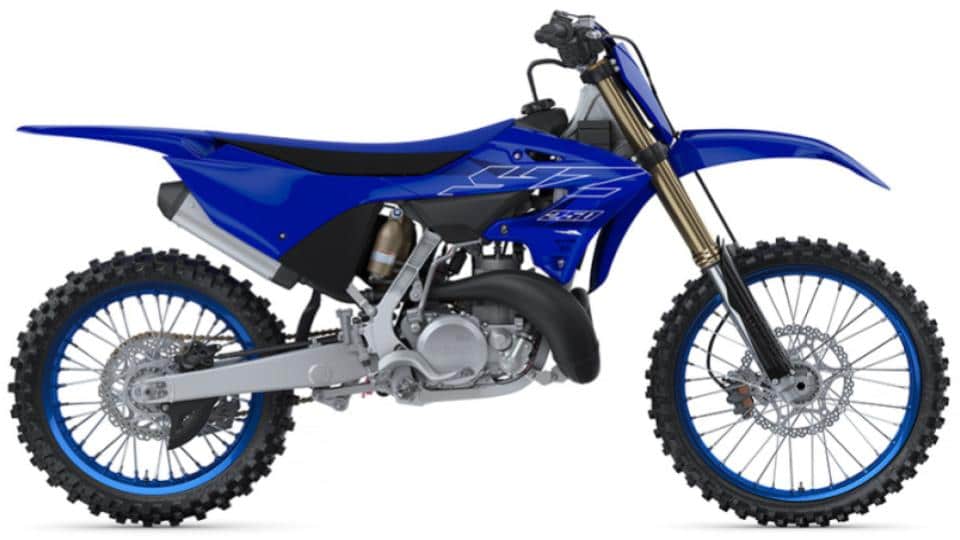
This 2-stroke bike from Yamaha is well-known for its rider-friendly character, class-leading handling, plush suspension, and powerful engine.
The latest Yamaha Yz250 model has an all-new bodywork that features enhanced ergonomics for superior agility and a higher degree of control.
You’ll get better handling, thanks to the industry-leading KYB suspension system with revised low-speed damping. The new front caliper takes braking performance to a whole new level.
Key Features
Pros
Cons
Verdict
We pick this as the best two-stroke dirt bike. The latest model is packed with features that will make you appreciate two-stroke models.
Overall Rating: 4.9
2. Yamaha Yz125
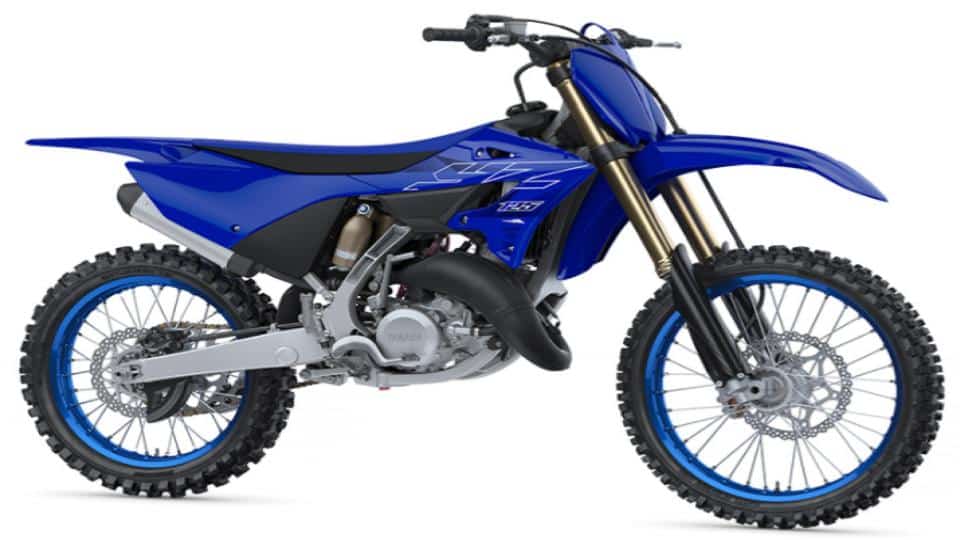
If you’re looking for a 2 stroke dirt bike that is more advanced, more capable, and more powerful than most conventional models, the Yamaha Yz125 may the bike for you.
This bike is highly reliable, thanks to its quality parts. This masterpiece will rock the tracks for a decade without issues. The build quality of this model is impressive at first glance. We’re impressed with the suspension of the Yz125, offering more precise damping as well as increased comfort and performance.
The highly developed aluminum frame is race-proven and engineered to offer just the right amount of flex and strength. This guarantees you the ideal balance of cornering performance and stability.
Key Features
Pros
Cons
Verdict
The Yz125 from Yamaha has a superior chassis and handling performance that you will love every time you are on the track.
Overall Rating: 4.8
3. Kawasaki KX100
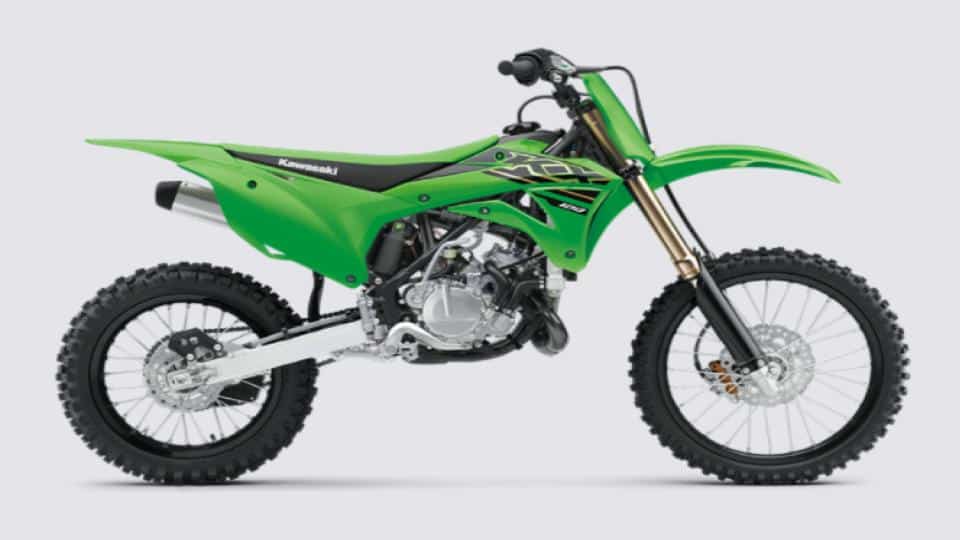
Kawasaki KX100 is a progressive 2-stroke dirt bike for the legends of the future. Its minimalist bodywork and slimmer shrouds are just what you need on the track.
Since it comes with a heavy-duty 99cc engine, you can expect this uniquely engineered two-stroke bike to provide a superior blend of proportionate power and durability. It has the perfect entry-level chassis for beginner riders before transitioning to bigger dirt bikes.
You can conveniently tune the rear and front suspension to your preference. You’ve got adjustable compression damping at the front and adjustable compression, rebound, as well as preload at the rear.
Key Features
Pros
Cons
Verdict
This is a great off-road masterpiece for beginners. It offers the best ergo-fit design for superior riding positions. Not to mention the superior suspension performance and exceptional braking power.
Overall Rating: 4.7
Review of Top 3 4-Stroke Dirt Bikes
1. KTM 450 SX-F – Best Overall
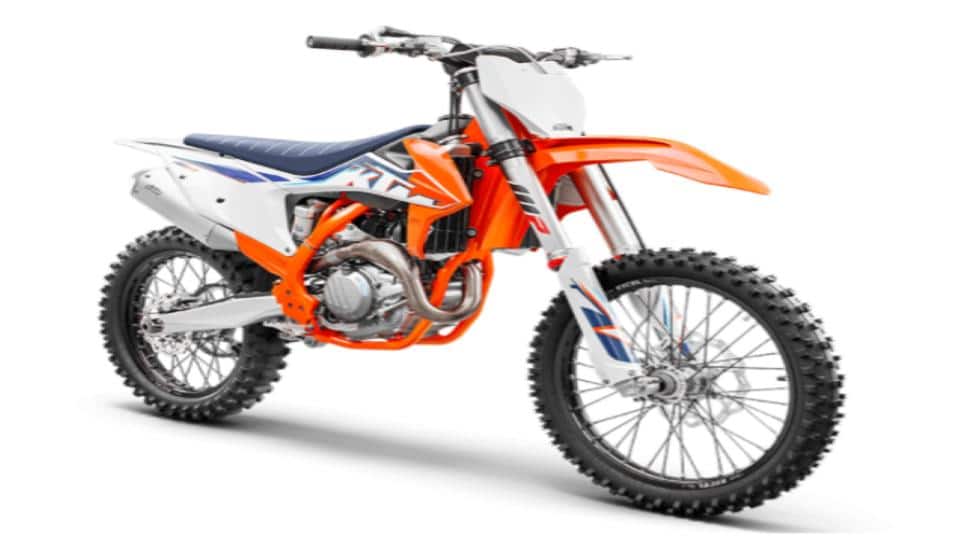
This is the ultimate best 4-stroke dirt bike you could think of. It is a championship-winning machine that offers consistent, smooth power and torque.
The KTM 450 SX-F sits at the peak of the four-stroke motocross range. You’ve got a compact camshaft design that features superior electronic injection for unrivaled power. The heavy-duty engine provides usable power through the bike’s rev range. It also combines great adjustability and class-leading electronics.
The frame is robot-welded to guarantee superior levels of consistency in responsive handling, stiffness, and quality. The uniquely made seat supports dynamic performance.
You’ve also got a balance shaft for reducing footpeg and handlebar vibrations as well as an E-starter for convenient starting.
Key Features
Pros
Cons
Verdict
This dirt bike is a monster on the track, especially on high-speed terrains. The stability and handling are incredible.
Overall Rating: 4.9
2. Kawasaki KX250
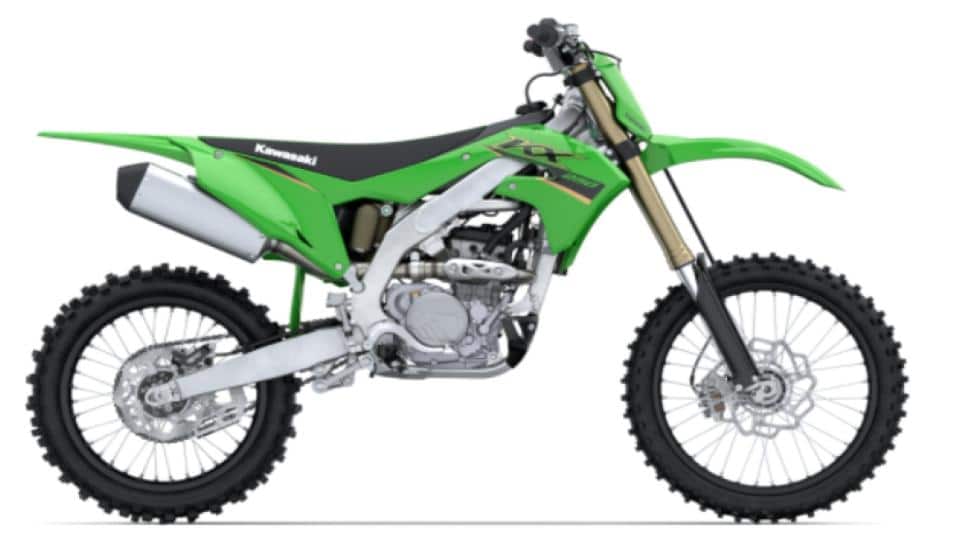
If it’s a championship-proven four-stroke dirt bike you are looking for, the Kawasaki KX250 will give you guaranteed performance.
This is a great bike for the money. The latest model has an updated engine with a new frame, state-of-the-art swingarm, hydraulic clutch, and electric start. With hydraulic clutch and coned disc spring working together, the feel and connectivity on the track are instantaneous. The bike accelerates hard with a great feel without fading.
The shock absorption of this frame is exceptional. The racing ergonomics on this beast are just amazing. The optimized riding position allows you to have unhindered rider movement.
Key Features
Pros
Cons
Verdict
Do you want to ride the high-speed terrain like a pro? Your top pick would be Kawasaki KX250, which brings the best handling and performance.
Overall Rating: 4.9
3. Yamaha Yz250F
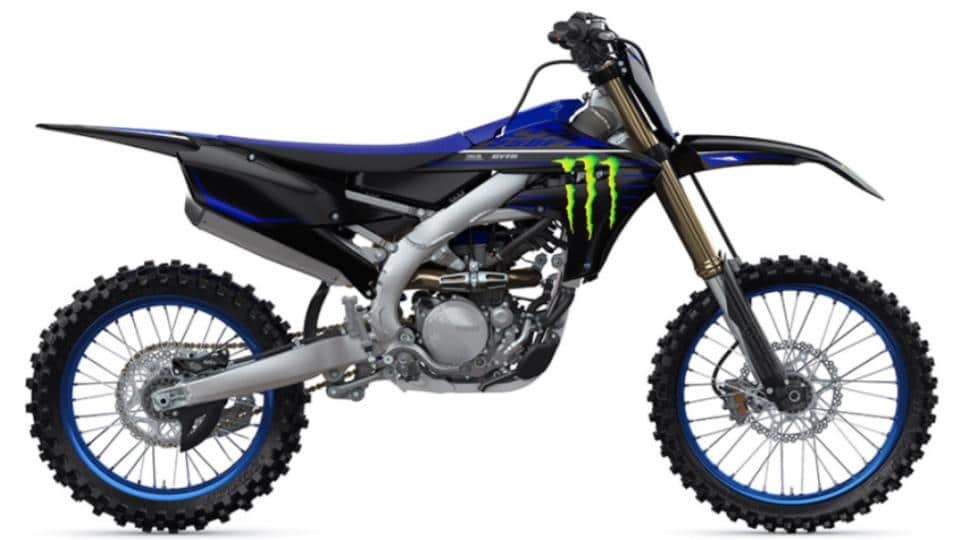
Have you been looking for a bike with the look of a full factory ride? The Yamaha Yz250F four-stroke machine fits the description. The bike features an outstanding graphics package and outstanding color that stand out on any terrain.
The heavy-duty 250cc 4 stroke engine is the real deal with low-end and mid-range torque, and a usable broad powerband. You’ve got a high-performing Yamaha power tuner app that allows for more precision tunability. You can make ignition timing and fueling changes easily using the app and then upload them to your bike.
The advanced bilateral aluminum frame, on the other hand, provide a superior balance between straight-line stability and cornering compliance.
Key Features
Pros
Cons
Verdict
Due to its state-of-the-art EFI tuning, stable chassis, premium-quality suspension, and all-around engine, the Yz250F from Yamaha is engineered to exceed your expectations.
Overall Rating: 4.9
Features Comparison – 2 Stroke Vs 4 Stroke Dirt Bikes
Let’s clear up the distinctions between 2 stroke vs 4 stroke dirt bikes with the following features comparison.
The Weight
2-stroke off-road bikes are generally lighter weight compared to their 4-stroke counterpart.
The extra weight is usually found in the additional moving parts within the engine. A 2-stroke engine is fitted with only the bearings, crankshafts, rod, and piston.
A 4-stroke engine, on the other hand, is normally equipped with bearings, timing chain, camshaft, valves, crankshaft, rod, and piston. As you can imagine, a 4-stroke engine has a lot more things spinning and moving around, which also creates more resistance.
Several effects are caused by weight. The first given fact is that more weight needs more energy for the bike to move. This can be an inconvenience if you are trying to move your off-road dirt bike around more frequently.
But this can be a good thing when you consider the ground you are riding on. The extra weight factors in more stability, which is just what you need when riding open high-speed off-road tracks. But you will need the lighter weight design of a 2 stroke dirt bike when riding a slow, technical terrain, such as a rocky downhill track.
Weight, therefore, is one of the most important deciding factors for beginner riders.
Verdict: It’s a tie because each design is perfect for a given type of terrain.
Maneuverability
There are some similarities between maneuverability and weight (lightweight or heavy), which can be confusing for new riders.
But let’s clarify some distinctions. Weight usually refers to the overall movement that is made up of the dirt bike’s natural force, ground force, and rider’s force.
Maneuverability, on the other hand, is mainly associated with the rider’s force, which excludes outside forces.
It’s all about the intentional movements you desire, such as the ability to lean as well as control the bike more easily, especially if you're doing tricks such as jumps or whipping the dirt bike. Maneuverability is mainly attributed to the overall weight that acts on the bike as well as the number of internal moving parts.
Two-stroke dirt bikes have fewer moving parts, which is great because this decreases the amount of gyroscopic force produced by the engine. Maneuverability can also be affected by the speed at which an off-road motorcycle engine generates power.
Some dirt bikes reach peak RPMs quicker compared to others. The speed at which a bike engine generates power can greatly affect the handling of a dirt bike.
Regardless of the lower top speed, 4-stroke dirt bikes generate more power down low, making it easier for a beginner rider to maneuver and control.
Verdict: The better all-around option for a beginner rider is a 4 stroke engine.
Power
2 stroke dirt bikes technically generate more power per cubic centimeter. That simply explains why a 125 two-stroke can compete against a 250 four-stroke and a 250 two-stroke can compete against a 450 four-stroke.
Even though they don’t generate the same horsepower, they produce comparable power, relatively speaking. Both off-road bike engines create unique power curves.
The power curve of a four-stroke dirt bike usually increases on a fairly straight line. The two-stroke power curve, on the other hand, appears to follow a relatively straight line. But the torque curve of a 2 stroke engine usually reveals a small dip followed by a spike in the torque delivery (power band).
Four-stroke dirt bikes, therefore, will create more consistent and smooth power throughout the RPM range. Two-stroke dirt bikes, on the other hand, generate maximum power within a specific RPM range. This would require you to modulate the clutch more to maintain your desired RPM range. Four-stroke engines create predictable, consistent power that easily translates into torque. Two-stroke engines create lively quick power.
Even though there are some attributes shared between two-strokes and four-strokes, many of these characteristics are subjected to variability. The variability is based on the displacement of the engine.
Verdict: Four-stroke dirt bikes win because they deliver consistent smooth power and torque.
Engine Temperature
Two-stroke and 4 stroke dirt bike engines are liquid-cooled. This means they use a system of cavities, hoses, and radiators surrounding the cylinder wall to get rid of the heat generated by the engine.
The 2-stroke off-road motorcycles can effectively idle at a lower RPM range. Thus, they often run cooler at low speeds. Four-strokes, on the other hand, struggle to stay cool when riding very slow on technical tracks.
When riding medium to high-speed tracks, however, both two-stroke and four-stroke bikes are fairly even when comparing engine temperature.
If you are planning to ride hard enduro terrain or tracks, two-stroke engines will generally run cooler.
Verdict: Two-stroke dirt bikes win this category because they run cooler on technical terrain and moderately cool on medium to high-speed terrains.
Engine Braking
Engine braking is normally correlated with the mass of the internal moving parts. A 4-stroke motorcycle engine provides consistent, strong engine braking all through the transmission. A 2-stroke model, in contrast, provides little to none.
You can combine engine braking and regular braking to slow down more quickly. Engine braking can add a lot of value to your riding. Engine braking, however, tends to be very useful for competitive purposes. But it may take you a while to get used to when riding leisurely.
Verdict: Four-stroke dirt bikes win because they offer both engine braking and regular braking.
Starting
Two-stroke dirt bikes are usually easier to start, and you’ll need less effort and energy to do so. In contrast, 4-stroke bikes are much heavier and need more strength to kick.
But many new 4-stroke models feature electric starters and they are becoming increasingly quicker and more reliable. They are incredibly reliable to the extent that some manufacturers of 4-strokes have removed the kick starter altogether.
When buying a new dirt bike, take your time to consider how frequently you will be starting and stopping. This may affect whether you buy a two-stroke or four-stroke.
Verdict: It’s a tie because the convenience of starting depends on whether it’s a 2-stroke or 4-stroke bike.
Traction
The consistent, smooth, linear power provided by 4-stroke engines usually offers better all-around traction compared to two-strokes.
When you are riding a 4-stroke bike, you will be able to apply strong power and traction to the ground regardless of the gear. Two-strokes continue to provide great traction, but due to the fluctuating power and decreased weight, they struggle to compete with four-strokes.
When riding a 2-stroke, you will be shifting gears and adjusting throttle control or clutch to achieve additional traction.
Verdict: 4 stroke dirt bikes win this category because of the smooth and consistent power that guarantees superior traction all the time.
Clutch & Throttle Control
Dirt bike riding is all about a balance of throttle and clutch to achieve maximum power and traction. The engine will create peak traction and power within a given window on the RPM range. By effectively using clutch and throttle control, you can modulate the RPM range.
Four-stroke motorcycles usually have a wider window in which they generate power and traction. So, it is much easier to apply traction to the ground, and less modulation of the throttle and clutch is required.
Two-stroke bikes, on the other hand, have a more narrow RPM window in which they create peak traction. This needs you to modulate the clutch as well as throttle control with very fine adjustments.
Verdict: 4 stroke dirt bikes win because they don’t require too much modulation of the clutch and throttle control.
Vibration
Two-stroke dirt bike engines often distribute much of the rotational force caused by the motor throughout the frame as well as handlebars as high-frequency vibrations. The vibrating sensation may cause fatigue or the inability to properly grip the bike for inexperienced riders.
Four-stroke dirt bikes, on the other hand, do an amazing job of retaining the vibrating energy within the motor. This is good because it significantly reduces the amount of vibration felt through the footpegs and the handlebars.
Verdict: 4 stroke dirt bikes win this category because they reduce the amount of vibration felt through the handlebars and footpegs.
2 Stroke Vs 4 Stroke Dirt Bike – The Winner
Based on our comparison, the 4-stroke dirt bike is the winner.
When considering dirt bike riding as a whole, 2-stroke models are featured less often in race classes, especially among the world-class motocross and supercross series. This is mainly due to a combination of characteristics and factors many professional riders find themselves more competitive on a four-stroke dirt bike.
But for leisure riding, it’s all about the terrain. A two-stroke holds pretty well on technical terrain, while a four-stroke holds exceptionally well on high-speed terrain. Now, if you're going for a 2-stroke bike, you may need to learn how to calculate 2-stroke fuel ratio.
There is one small bike that is not a dirt bike and has a 4-stroke engine. Pit bike size are small with 4-stroke engines, known for their agility and ease of handling. These engines are more efficient and produce fewer emissions than 2-stroke engines, and are popular for their reliability and performance in off-road racing and recreational riding.
FAQs
You've been riding your motocross bike for a while now, and you're considering upgrading to a trail bike. So which one is right for you?
Is a 2-stroke or a 4-stroke dirt bike better?
A 2-stroke is lighter and easier to handle, requires less maintenance, and is less expensive to maintain. The 2-stroke has a better power-to-weight ratio than 4-stroke off-road bikes. 4-strokes are massive power and torque machines primarily used for racing.
Why are 4-stroke dirt bikes better than 2-strokes?
A 2-stroke bike is lighter, and a 4-stroke bike offers better fuel efficiency and stability. If you need more torque and power out of the bike, it is probably better to go for a 4-stroke for racing.
Are 2-strokes more powerful than 4-strokes?
The power delivery of a 2-stroke is instant, and the engine puts out more power than a 4-stroke. Each revolution of the crankshaft ignites combustion with a 2-stroke, whereas it happens once for every two revolutions in a 4-stroke.
Is 2-stroke or 4-stroke better for trail riding?
The engine's overall design is the main reason 4-strokes are better than 2-strokes off-road. For one thing, 4-strokes produce more torque and horsepower than 2-strokes, which allows them to climb hills in trail riding more easily. But most importantly, 4-stroke engines are more fuel efficient - making them much cheaper for you to ride over the long term.
